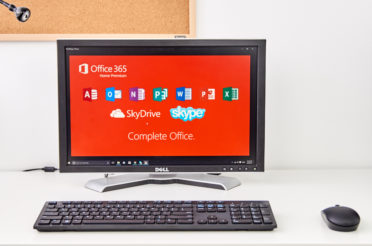Choosing a corporate computing device for mobile users can be a daunting task. Mobile devices are much more personal than traditional PC’s and users express desires which are very heavily influenced by their existing consumer experience and personal preferences.
The “old-way” of doing things where IT dictated what device or devices were to be used is a way of the past. This attitude alienates the IT function from the business and significantly reduces buy-in from the users. The net result is that IT might have saved the business a few dollars on acquisition, but may well have lost the opportunity for productivity gains over the life of the device. Why? No buy-in = they just don’t care. The best you will get is compliance.
What we need is a fresh perspective with a user centric approach. A user centric approach puts the user and their experience at the front and centre of the device selection process.
How do you evaluate with a user centric approach?
Firstly, you need to understand how the device will and can be used by the individuals using the device.
In your organisation, you will have different role types and, depending on the size of your organisation, an individual may wear multiple role type hats. Classifying by role types, you will gain an insight into “a day in the life of a ….”. For example, this could be a sales person, an executive, an analyst, a service professional, a field technician, a warehouse staffer, an administration coordinator, etc. Understanding these role types means you can profile how end user computing devices are “currently used” and also “could be used” to enhance role productivity. The could be scenario analysis is critical to exploring possibilities and breaking new ground.
Now you have an understanding of device usage it’s time to understand what constitutes a good, consistent user experience.
Consistent user experience is of critical importance. This comes in the form of a balancing act between ease of use from the end user of the device and standardisation from the business itself. Regardless of the device fit, the user must have conscious buy-in if the user is to extract maximum value from the device and subsequently increase role productivity. The business must also embrace standardisation if it is to deliver a quality and consistent service. Standardisation is important to the organisation, for example, to reduce its ongoing cost of supporting the end user and therefore increasing service availability, user satisfaction and productivity measures.
Make sure you include a subset of the users in the evaluation.
As with any change program and, as indicated earlier, buy-in is key. You can’t directly reach every user, so you will have to settle for a subset. Ideally, your subset of stakeholders represent each role type in the organisation and must be influential to the other staff (formal managerial responsibility and/or informally as a recognised influential team member).
Individualism rules in today’s society and you will never please 100% of the people 100% of the time. You need to offer a little extra flex factor to cover this reality.
Let’s face it, you’re not going to please everyone. There is an option for soft wins to counter this rule and that is flexibility. Where non-critical services are being delivered or the downside business impact is low, why not offer the end user the opportunity to have some device choice flexibility. For example, why not let them choose their own smart phone (from within sound criteria), make it viable for them to bring their own device or set up application and service delivery capabilities that increase the flexibility of device choice without compromising the value of the mobility initiative. It is possible and a little creativity is all it takes to make this a reality.
Take this approach and you will be well on your way to selecting corporate mobile computing devices that are ‘fit for purpose’ and you will maximise value from your investment.









